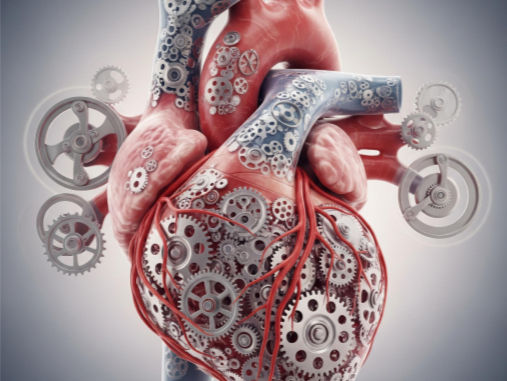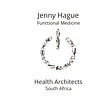Cardiorespiratory Fitness (CRF) is the engine around which human health is built.
- Sep 17
- 6 min read

It Pays NOT to be a winner.
We live in a world that constantly celebrates winners – those who achieve more, acquire more, and often, exert less physical effort thanks to modern conveniences. But what if our ingrained reward system, the very mechanism that once drove our survival, is now actively working against our health? What if, in the pursuit of "winning" in the modern sense, we are inadvertently losing the most important prize of all: our well-being and longevity?
This surprising premise lies at the heart of a fundamental truth:
Cardiorespiratory Fitness (CRF) is the engine around which human health is built.
Yet, despite compelling evidence, chronic diseases are rampant, and too few adults meet basic physical activity guidelines. This isn't about being lazy or stupid; it’s about a profound disconnect between our evolutionary blueprint and our modern environment.

The Problem: A Healthcare System Solving the Wrong Problem
For decades, the healthcare industry has largely focused on treating the symptoms of chronic diseases, rather than addressing their root causes. This approach is increasingly seen as flawed.
The "Sick Care Industry"
This sector, driven by profit, has historically overlooked CRF because "you can't take a pill out of it". The consequence is a reliance on vast amounts of pharmaceuticals that, despite being widely consumed, "cannot and could never change chronic disease in any way". By omission, the industry has implicitly failed to tell you about the crucial role of fitness.

The "Health Industry" (e.g., Health Clubs):
Even sectors promoting "health" often miss the mark. Instead of focusing on fundamental health outcomes, the emphasis shifts to vanity (looking good in a bathing suit), sports performance (doing a 10k run), or achieving balance. These are "interesting byproducts," but not the core purpose of fitness. The business model of many health clubs, for example, relies on a significant portion of members not using the facilities. Typically, only 30% of members use the club, while 70% do not, allowing for the overselling of memberships. With an average membership lasting only 13 months, these memberships can then be resold at a higher price. This creates a "vested interest" in people not taking health and fitness seriously.

"Wellness Overload" and Missed Opportunities:
Many corporate wellness initiatives offer a multitude of goals, leading to "wellness overload" where employees feel overwhelmed and disengaged, making it difficult to track and reward meaningful progress. Crucially, CRF, despite being a "single most potent vital sign that predicts human health and mortality," is "not accurately, routinely, and regularly assessed" in either clinical settings or the workplace. Its exclusion from major cardiovascular disease risk calculators further highlights this oversight.
The Real "Why": Our Primal Programming is Out of Sync
The widespread struggle to adopt healthy lifestyles isn't due to inherent laziness. Instead, it’s because "we're missing something fundamental". Our biological "software," developed over millions of years, is simply "lagging behind" our rapidly changed environment.

Life in "Great Granny's Time":
Consider our ancestors. Their days began at sunrise, and their existence demanded constant physical activity. Approximately six hours a day were spent foraging for food, an activity that, if measured today, would be considered moderate-intensity (between 65-75% of maximum heart rate). This wasn't "golf"; it was a relentless, daily necessity.
The Original "Pays to Be a Winner" Principle:
In this ancestral environment, "winning" meant survival and thriving. Like Navy SEALs in training where excelling in an "exercise or evolution" earns more rest, food, and sleep, improving chances of selection, our ancestors were directly rewarded for efficiency. Finding food quickly yielded immediate gratification (taste, hydration), allowing for more rest, more calories, greater strength, and even better reproductive opportunities.
The Agricultural Revolution: The Great Disconnect:
This fundamental shift, starting with the agricultural revolution, changed everything. Humans sought to cease their nomadic existence, escaping the constant chase for food and the consumption of unpalatable items. As we settled and domesticated animals, our biology began to diverge from our environmental demands. This profound change initiated a decline in human health, evidenced by the emergence of chronic diseases that continue to plague us today.

Modern Misalignment:
Today, our ancient reward system is tragically "out of sync" with our modern lives. We are now rewarded for low physical activity and for consuming highly palatable, calorie-dense foods that were once rare and hard to obtain. Our desire for convenience, a hallmark of modern society, directly contradicts our biological programming, leading us down a path of chronic illness
The Solution: It Pays NOT to Be a Winner (by modern standards)
To reclaim our health, we must redefine what it means to "win." It means consciously choosing to live in a way that aligns with our biological heritage, rather than succumbing to the temptations of modern convenience. The choice is stark: do you want to live in Johannesburg or Cape Town?.

The "Cape Town" Standard for Health (Above 10 METs):
High fitness is like living in "Cape Town" – a vibrant, healthy existence where your body's "engine is working efficiently". Achieving a CRF level above 10 Metabolic Equivalents (METs) means a remarkable 60% drop in the risk of developing chronic diseases. Even if you already have a chronic condition, reaching this benchmark significantly reduces its fatality. Each 1-MET increase, a "small increment achievable by most individuals," is associated with a 10%-25% improvement in survival.
The Consequences of Low Fitness (Below 5 METs):
Conversely, low fitness is akin to living in "Johannesburg," where your body's "infrastructure breaks". This translates to "burning diesel" – a dirty process known as oxidative stress, which causes systems to "rust" and break down. The consequences are dire:
Cardiovascular Disease: The transport system fails, cholesterol accumulates in arteries, leading to heart disease.
Cancers: Oxidative stress burdens cells, increasing the risk of various cancers. Low CRF has been strongly linked to higher mortality rates from cancers of the breast, digestive tract, colon, lung, and prostate.
Diabetes: Impaired glucose supply and liver problems can lead to diabetes. Low CRF predicts the development of type 2 diabetes and metabolic syndrome, and even modest improvements can significantly reduce this risk.
Neurodegeneration: Inflammation escalates, potentially contributing to Alzheimer's and dementia. Higher CRF is linked to a reduced risk of these cognitive conditions.
Overall Mortality: Low fitness is a stronger and independent predictor of all-cause mortality than traditional risk factors like smoking, hypertension, high cholesterol, and type 2 diabetes.
Achievable Goals: You Don't Need to Be an Athlete:
The good news is that "exceptionally high CRF levels are not necessary to provide significant health benefits". The most substantial improvements occur when individuals move from the least fit to the next least fit group. Even "modest increases in physical activity" can yield "clinically significant benefits" for habitually sedentary individuals.
The "How" and "What" – Simple, Effective Steps:

Aerobic Activity: Aim for 150 to 300 minutes of moderate-intensity aerobic physical activity per week, or 75 to 150 minutes of vigorous-intensity aerobic physical activity per week, or an equivalent combination. Sessions should be at least 10 minutes. For diabetics, vigorous intensity aerobic exercise is particularly beneficial for glucose control.

Resistance Training: Incorporate muscle-strengthening activities involving all major muscle groups on 2 or more days per week. This is "the single most valuable thing a person might do to try to preserve their functional independence". Increased muscle strength is associated with reduced all-cause mortality and improved cardio-metabolic health. For diabetics, resistance training is absolutely vital for blood glucose control and should be included.

Holistic Lifestyle: Beyond exercise, embrace a varied diet (even including foods you don't typically prefer), align your sleep patterns with the sun, and actively manage stress levels. Reduce Sedentary Behavior: Limit prolonged sitting and replace it with physical activity of any intensity.
Join the Movement: It Pays Not to Be a Winner
It’s time to challenge the modern narrative of "winning" that pushes us towards convenience and inactivity. The path to true health is not about becoming a superhuman athlete, but about embracing consistent, moderate physical activity and mindful lifestyle choices.

The evidence is clear: low fitness is the biggest cause of death. By prioritizing CRF, individuals can significantly reduce their risk of chronic disease and mortality, regardless of other health factors. This is why the American Heart Association (AHA) and Exercise is Medicine has called for CRF to be recognized as a clinical vital sign, and why workplace wellness programs are encouraged to regularly assess and reward employees for improving and maintaining their CRF.

So, let's start a movement. A movement with a motto that goes against the grain of modern life, but aligns with our deepest biological needs: "It pays not to be a winner.". Make a lasting change in your life – for your health, for your future.
Achieve Your Health Goals with Our Proven Lifestyle Management Program
Do you want to manage an existing health condition or the risk factors for chronic illness, lose weight safely and keep it off, get more active, achieve a sporting goal or manage the stress in your life? We have a solution for you - a lifestyle management programme with proven results.




Comments